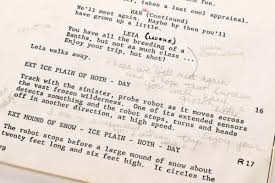Introduction
Writing Your Life-Narrative

Celestics uses the cinematic metaphor to describe how the practice works. In the movie world, an auteur is someone who writes a screenplay, directs the film, and may also play a role in it. In Celestics, you do all three. The way you write your life-narrative gives direction to how you act in life, and you are, of course, the star of your own movie, the main character.
Other metaphors or analogical parallels are also useful in learning Celestics.
The LLM Analogy
It is sometimes instructive to rely on an analogy to IT and AI to see how Celestics works. For instance, the mythographic database (inventory) of StarBase can be compared to a LLM, a language learning machine. This is a construct of AI, automated intelligence. AI is not alive as all intelligence is, and it does not knowingly compose anything for the output phase. It merely computes without self-awareness or cognitive capacity. Technicians who train a LLM feed it vast amounts of data in textual form and audo-visual form as well.

Consider only the textual form. Technicians feed written text in electronic format into a LLM with all the words and grammatical structures to 1s and 0s. In the source code, each single word occurs in digital code, a sequence of 1s and 0s. To construct the LLM, technicians build complex algorithms for the purpose of instructing the digital code how to manage the content on which it is trained. The LLM then uses those directive algorithms to compose output to be used. The primary action of the computing machine is sentence completion, then comes sorting and cross-referencing operations on the content. The LLM completes sentences composed of words coded in 1s and 0s by mindlessly following the instructive algorithms. In other words, it computes output. A LLM is a computer-driven tool, merely a computational device tasked to mimic human language and thinking. Computers demonstrate automatic intelligence, or better still, an automated simulacrum of intelligence. The LLM cannot think on its own and does not possess agency. It can only mimic the intelligence of the human operator.
Now compare the LLM to the Celestics database and the operations of the prime algorithm, asset > engram. The content of the database, comparable to the data fed into a LLM by its trainers, is the totality of mythological material, the inventory. This content is keyed or coded by real-sky constellations which serve as categories for selection of the data. It is purely and simply a data field of celestial points with precise astronomical designations: Vira, the heart-star of the Lion @ 151 or 1 Virgo in the signframe.
Additional to the astronomically coded engram/constellations, there are the 16 entries in the manifold. These are the directing factors in the algorithms that organize and drive the database, comparable to how a LLM is programmed. There are 256 combinations of asset> engram in the OS of Celestics, but each individual only has a selection of 16 of these in the manifold. Each individual has the same 16 innate assets. They are inherent to the human genome but they are not all in the same condition. In one case, the Mercurial asset may be in good condition, but the Saturnian asset, less so. These variations are due to the conditions of birth determined by racial identity, native language, and locale of birth — the RPL.
Learning to Prompt
In order to use a LLM chatbot, the user has to prompt the device. The intention and composition of the prompt determines the output to the user. Since the introduction of the open source code of ChatGPT in November 2023, there is a new game in the world: the art and method of prompting. This is an exact parallel to the art and method of forensic astronomy, but there is an enormous difference in the code in use. StarBase is alive, mentally, emotionally, and imaginatively interactive with the user. The zodiacal database of constellation is a repository of images loaded with content that has accrued from human experience over millennia. The human psyche is a living organism as much as the physical body. The mythographic inventory preserves a record of those experiences. Thus, when you prompt the database, you access the memorial register of humanity.
A LLM only delivers an accurate and pertinent response — if it does! –depending on how you prompt it. Likewise for the way you prompt the celestial database using the prime algorithm. Venus > Scales is the basis of a prompt you compose in the process of investigating your life-narrative. Every prompt begins with one line in your manifold. You learn to use the method by extrapolating that line so that it presents a clear and coherent query. For Venus > Scales, the inceptive query is, How do I express my Venusian talent for appreciation in the narrative frame of the Scales? By inceptive query, I mean the most elementary formulation of that algorithm. Once you have formulated the prompt in its inceptive version, you go on to elaborate it as you like with the intention to making it more specific so that the output is more specific as well.
In Celestics, you learn a lot from the biographies of famous people, the exemplars. Suppose you are interested in, say, Vaslav Nijinsky, the famous Russian ballet dancer and choreographer. You can learn about him from a well-chosen biography or documentaries on the internet. Two features of his life come to the forefront: he could leap in an almost supernatural way, and he went mad — so they say. How did this happen? Can you detect certain factors in his life-narrative that might offer insight on these biographic points. Two code-lines in his manifold are relevant to these prompting questions. They are south lunar node in the Great Void and Neptune in the Bull.
South Lunar Node :: feeling into the lives of others, empathy @ 292 in the Great Void :: loss of humanity. Nijinsky’s madness (which he recounts in his personal journal) was aptly summarized by the English poet W. H. Auden in the poem, September1, 1939.
What mad Nijinsky wrote
About Diaghilev
Is true of the normal heart;
For the error bred in the bone
Of each woman and each man
Craves what it cannot have,
Not universal love
But to be loved alone.
When Nijinsky reached into others and tried to feel their lives as they lived them (south lunar node), he found a void, an absence of humanity and love for humanity. Instead, he found selfish, narcissistic love. He saw that others around him craved “not universal love / But to be loved alone.” This perception devastated him. Such are the perils of the Great Void.

As for Neptune :: to enchant @ 63 in the Bull, that engram like all others can morph into various renderings. Specific to Nijinsky, the image of the Cretan bull-leaper comes to mind. Film footage from the era shows him making impossible leaps and seeming to pause and hang in space in defiance of gravity. The record of art demonstrates how code-lines can be decoded and matched to biographic evidence.
More on Nijinsky in Biography.
Current and Prospective Tenses
Working the method in this way, you see immediately how to compose the prompt in the current tense, or in a prospective tense. Mars > Crab: How do I express my Martian talent in that scripting frame? That is the current tense. You are asking how you already use the innate skill, based on biographic evidence of your current course of action in life, and referring to the perspective of past efforts. Thus you evaluate your current behavior with that specific talent. The prospective tense of the prompt is different. It shapes up like this: How can I use my Martian aptitude, say, for daring and defiance, to the best or optimum manner within the themes of the Crab? With this formulation of the prompt, you allow that you have not yet learned how to express and implement a particular talent to its best expression.
The mindless digital computations of a LLM rely on sentence completion calculated on 1s and 0s, but in Celestics you engage in free association to derive an outcome from the prompt. The human psyche has its own internal algorithms for organization, cross-referencing, filing in categories, seeking patterns (pareidolia), detecting affinities, and more. It resonates spontaneously to both words and wordless images. When your eyes see the image of the Scorpion, either in a graphic rendering or in the star pattern in the actual sky, your psyche immediately resonates as if it detects an incoming signal.
Device and Application
A smartphone or laptop or desktop is an AI device that runs applications. Likewise, each asset in the manifold is a device or tool that runs one of 16 applications. In the source code of StarBase, this is the “asset enable” file. Uranus is the device that enables or runs the application of the constellation where it is located. The same holds true for all entries in the manifold. You can remember this operation by using slang: “I am running the Moon on the Lion application.” The tool-kit supports the application. With that simple idea in mind, you can compose the appropriate prompt in different ways, as it suits you. For the code line Moon > Manitu, you can ask, How am I using my lunar faculty of prescience to run the Manitu application? How can I use the Lunar skill in the best way by supporting the scripting themes of the Manitu, which in turn enables me to do as I intend with that faculty?
The asset supports the application. The application enables the asset. Mars supports the Crab, the Crab enables Mars. That is all you need to remember.
A Musical Analogy
It may come as a somewhat astonishing statement that we each have 16 generic assets. This set of tools is inherent to the human species. Think of the assets in the manifold as musical instruments. Some instruments are in better shape than others, tuned better for your purposes. Some faculties may be damaged or limited in use by genetic and racial factors, or by IQ.
By the way, I regard IQ as a dubious index at best. It may indicate the capacity to use intelligence, rather than the measure of the intelligence one possesses. However, I have known someone with an IQ of 184 who was not able to use her intelligence to its best application. This was a tragic case, due in part to lack of discipline and in part to the bad fortune of circumstances which did not encourage learning or provide support for acquiring the discipline suited to her innate talents. Biographic studies in Celestics show significant cases of individuals with genius potential who came from poor and deprived backgrounds, and yet managed to use their intelligence to optimal capacity. After investigating many such cases, I conclude that there is an “X Factor” in human make-up that determines if and how an individual will maximize their innate intelligence. This factor is incalculable and seems to occur at random due to a throw of the genetic dice.
Russian anthropologist Lev Gumilev (1912 – 1992) proposed (in Ethnogenesis and the Biosphere of Earth, 1978) the odd name “passionary” for such anomalies, and “passionarity” for the condition they exemplify. Gumilev specifies that passionarity is not a universal trait found in everyone equally. Rather, it is a rare characteristic impulsion of certain individuals within an ethnos; hence, it has a racial or ethnic bearing. Gumilev’s unique paradigm of ethnogenesis presumes a natural biogenetic evolution over time through which an ethnicity produces prodigies to advance its survival. On this premise, all geniuses have a racial provenance and purpose. He also used the expression “X factor” in reference to ethnogenetic anomalies, admitting that he could not explain their origin.
© John Lamb Lash 2025. All rights reserved
